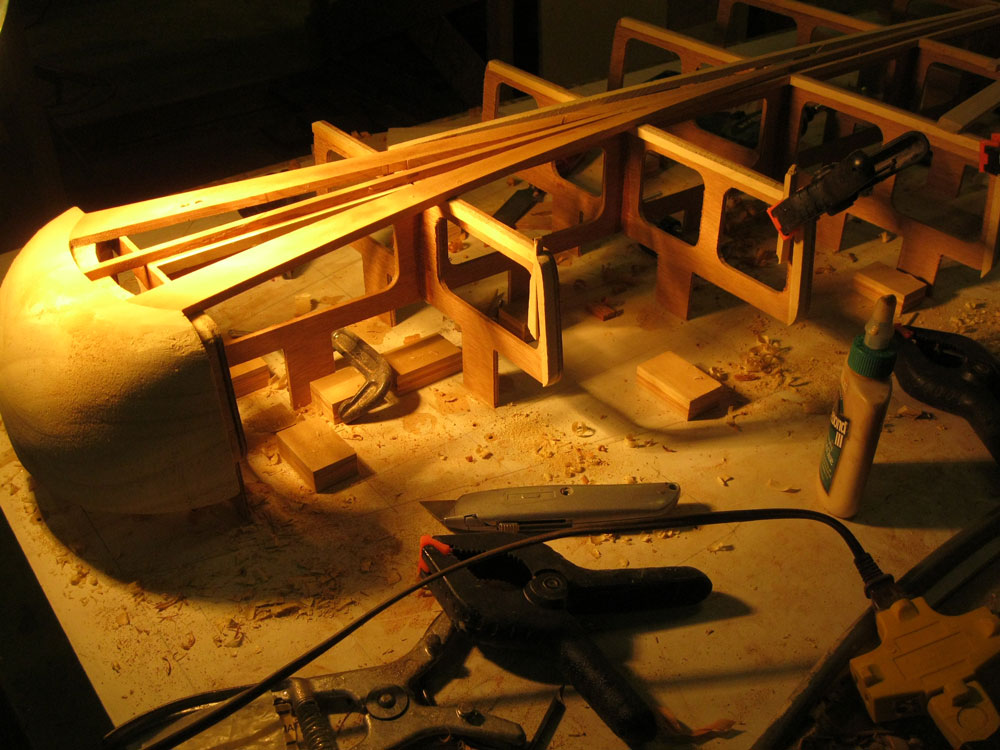
Are you looking for a winter project? Have you got some spare time and space in your garage? If so, have you considered making your own wooden paddleboard? It might not be the quickest way to get out on the water but it’s sure to be the most rewarding. Are you up for the challenge?!
Randy Bogardus from Clearwood Paddleboards explains more about wooden paddleboards and what’s involved in making your own.
Wood paddleboards and surfboards have a long history and they have been common in Hawaii for many centuries. The modern version of “woodies” however, is something altogether different than what ancient Hawaiians were riding. With the advent of waterproof glues and plywood which became available in the 1930’s, Tom Blake who lived in Southern California began constructing the “modern” “kookbox” type of paddleboard. These were common for several decades and used by the surf lifeguards on the beaches of Southern California.
Currently, highly refined versions of the “kookbox” can be built from scratch, plans or kits and come in many forms from surf style and flat water sup’s to straight prone paddle surfboards and builders around the world have taken up the challenge of building one or several of these craft for their personal quivers. There are forums online dedicated to this type of board construction with builders from many different countries contributing to an ongoing dialogue about all of the nuances of the building process. Some woods that can be sourced for hollow board construction will yield a finished board as light as or lighter than boards of equivalent size made of foam and fiberglass, with the added benefit that hollow wood boards can and do outlast many “boards” made of foam and plastic.
I will be honest here; building your own hollow wooden SUP is NOT a quick and easy way to get on the water. You may ask why, then, would anyone want to build a hollow wood board? The answer to that question can be stated in this way: the rewards are measured in the beauty, longevity and personal satisfaction that will come with building a wood SUP with your own hands. World-wide, there is great interest in alternative building methods for “home-made” surfboards and paddleboards. What that means to a prospective hollow wood board builder is there are many different styles of hollow wooden SUPs to choose from based on your interest in the various aspects of the sport. Additionally, hollow wood boards can be built with mostly sustainable products such as salvaged or plantation grown woods and there are now epoxy resins available which are made from non-petroleum based raw materials.


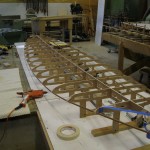
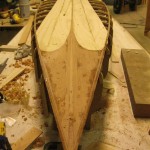
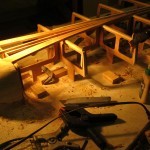
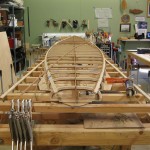
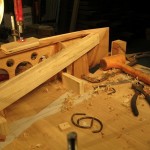
Randy, I am currently building a wood SUP. I have purchased no kit or plans. Everything I’ve done so far I’ve learned from YouTube videos. My board is 12′ long. I’ve used cedar fence pickets for everything, and lots of glue and clamps. I built a jig to build it on. I’ve got about 24 hours into the project so far. I have a few questions, fin placement, single fin or tri-fin. size and shape of fin or fins. I’m planning on making the fin or fins out of wood. I’ll build up wood in the skeleton to receive the… Read more »
Hi Matt, thanks for getting in touch and congrats on taking on the full challenge of designing and building your own board! The question of type of fin set up has a great deal to do with how you will use you board and what type of ride you are looking for….single fins and tri fins have quite different ride characteristics. If you are going to use the board primarily for fitness and flatwater type paddling I would keep it simple and go with a single fin arrangement. I you want to surf the board as well, then tri fin… Read more »
Hi Randy was wondering if you could help me with the nose of my board. I am still in the “blue print” phase as i cannot figure out how wide to make it. I would like to do a kayak style nose as it would track better in the canadian waters. Any tips would be great.
Hi April, sure, I’d be happy to help you….some photos would be good to reference if you can send some….you can get in touch with me through the contact point on my website at http://clearwoodpaddleboards.com/ since I’m not sure photos can be posted in this comment section. In general, there are two choices for how to detail the nose….you can bring the rail strips together in mitered fashion or you can create a nose block that is rabbeted to accept the strips….a picture is worth a thousand words…..:-)
Hey Randy, I’m in the process of making a board somewhat like that of commenter “Matt” above. I’m a college student so I’ve been trying to keep the cost down as much as possible. I’ve used 6 inch Cedar fence boards to create the entire top/bottom/interior of the board (had to cut them in the middle to get the board shaped right). From a bit of reading I’ve done (total novice on paddle boards) I found that paddle boards built for speed are usually meant to cut through the water as opposed to going over it. I found it a… Read more »
Hi John, Lot’s to consider on all the point you address. If you could send me some photos of what you currently have done I can give you some feedback. But in general, you are correct about the difference between displacement vs planing. You may in fact have a shape that will work fine for general touring but send photos and I’ll get you some feedback. As far as the finish for the board, if you want your work to last you need to glass it. I would be happy to give you some feedback if you contact me at… Read more »